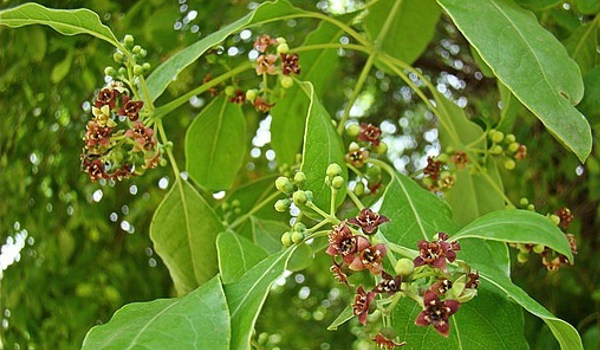Tomorrow is the first day of Spring (yay!). Let’s just let that sink in a moment. Tomorrow is Spring! We’re going to say that’s synonymous with warm weather and sunshine, because saying so must make it so, right? 😉
Warmer weather also means it won’t be too much longer until we get to ditch the boots and sneakers, in exchange for lighter footwear and sandals. No complaints here! For a lot of us though, our feet take a back seat during the colder months and end up being a lot dryer in early Spring than we’d like them to be. For that reason I’ve included a little DIY moisturizing sugar scrub recipe for you guys. It’s sure to leave your feet feeling smooth and much more hydrated, and it’s really simple to make!
Did you know that there are several essential oils that can actually help heal dry, cracked skin? Among those oil of course, are Lavender, Chamomile, Bergamot and Geranium, along with a few others, including Sandalwood essential oil.
Sandalwood essential oil, also called Santalum album, is a lovely subtly sweet smelling oil, which has a hint of a balsamic scent to it. This oil is steam distilled from the chipped heartwood and roots of the Sandalwood tree.
One of the reasons this particular oil is often more costly is because the Sandalwood tree must be at least 30 years old before being ready for the production of the essential oil. This is to ensure there is a decent essential oil yield.
The tree is an evergreen, parasitic tree which burrows it’s roots into the roots of surrounding trees. It can grow up to 9 meters (30 feet) tall and has a grey-brown trunk with many slender and smooth branches. It’s leaves are leathery in texture, and it’s flowers are a purple to pink color. It isn’t until the tree is 30-60 years old that it has reached it’s full maturity, at which point the center of the trunk (heart wood) has achieved it’s greatest essential oil content. The Sandalwood tree is never felled to harvest the essential oil, but rather uprooted in the rainy season.
Sandalwood has been used for over 4000 years as a perfume material, making it one of the oldest known perfume materials. It has also long been used in many other applications, including furniture and caskets.
Precautions: There are no known precautions for Sandalwood essential oil.
Sandalwood is in great demand as an incense as well as an essential oil. The incense has an incredibly calming effect, making it a favorite in the yoga community. In Tantric yoga, it is often used for the awakening of sexual energy, while Swahra yoga recommends it for the union of the senses.
As an essential oil on the skin (diluted of course!) it acts as a powerful astringent, which can be very beneficial for oily skin, while also very healing for dry, chapped skin and eczema.
Diffused, beyond it’s emotional and meditative uses, it is invaluable in instances of respiratory tract infections, bronchitis, and dry persistent coughs. Furthermore, Sandalwood essential oil is a great lymphatic system and circulatory system stimulator, and is a tonic for the adrenals, spleen and reproductive system. To reap the benefits for the lymphatic, circulatory or lymphatic systems, the best method of application is diluted on the skin by way of massage.
So this spring, when you’re trying to get your feet ready for lighter footwear, why not harness the benefits of some of the oils we’ve mentioned and try making a simple sugar scrub? It’s easy enough to do, and doesn’t require many ingredients!
Simply mix together;
20 drops of Lavender essential oil
10 drops of Roman Chamomile essential oil
20 drops of Sandalwood essential oil
10 Patchouli essential oil
Add to that, 4 ounces of brown sugar and enough jojoba oil to create a sort of paste. Voila!
Store it in a sealed jar (preferably dark glass), and keep it in a cool, dark place. This scrub will keep a couple of months if stored correctly.
Enjoyed this post? Don’t forget to share it with your friends!
*Please note that all essential oils are extremely potent and need to be respected. Always make sure you dilute the oils you use. You also don’t need a lot of the oil to reap it’s benefits and it’s always wise to err on the side of caution, especially when using oils on or around small children, elderly or people with underlying health conditions. When in doubt, always consult a Certified Aromatherapist before use.*

I like Sandalwood Essential Oil, not as a base, but as an additive to many different mixtures
It acts as such a lovely fixative in blends. 😀